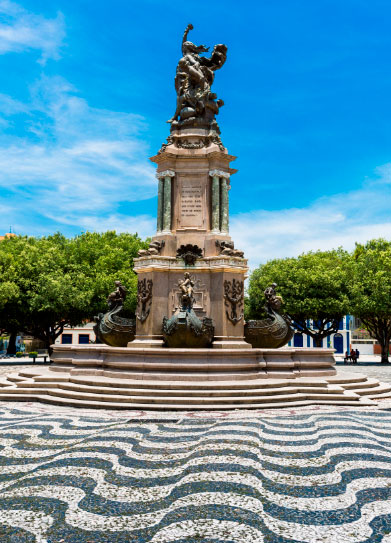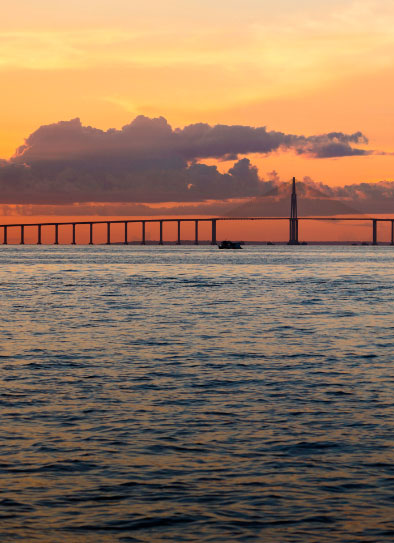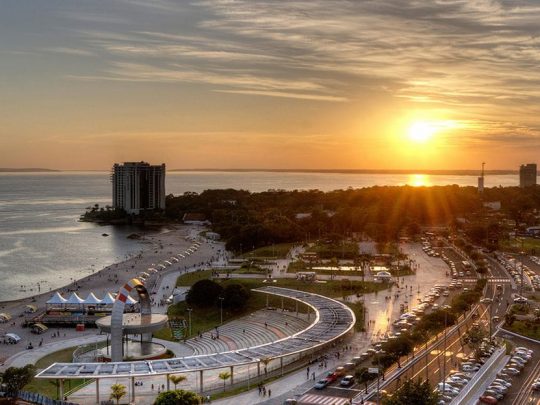Rua 10 De Julho, 481 - Centro - Manaus / Amazonas - CEP: 69010-060
Rua 10 De Julho, 481 - Centro - Manaus / Amazonas - CEP: 69010-060
Manaus is a city rich in history and at the same time surrounded by the forest.



In the city, the main attractions are from the rubber-boom, a period when Manaus was one of the most important cities in the country. By boat, it is possible to navigate its rivers and streams full of plants from the rainforest.

The Amazonas Opera House, the ultimate symbol of the rubber period, was inaugurated in 1896, for the presentation of European plays and operas that came to delight the rubber barons. In it, Carlos Gomes played “O Guarani” and Enrico Caruso sang “La Traviata”. The construction is simply enchanting both on the inside and outside, with its neoclassical facade painted in a pink shade. The dome, on the other hand, is made of 36,000 ceramic tiles in the colors of the Brazilian flag. Inside, we can see a large amount of English iron and Portuguese and Italian marble. The concert hall has a capacity for 700 people and is decorated with chandeliers from Venice. In the month of May, it is the setting for the Amazonas Opera Festival. If it doesn’t have shows during your visit, it is worth taking a guided tour, which is a journey into the theater’s more than century-old history.

The Palace of Justice is a historic Brazilian building located on Eduardo Ribeiro Avenue, in the center of Manaus. It is located just behind the famous Amazonas Opera House and has more than 2,000m² (21,528ft²) of area built in stone and brick masonry.

The Church of Sao Sebastiao is in front of the Amazonas Theater and is a picturesque place that stands out for its internal decoration. The church dates from 1888 and has a wide variety of styles. It is a cool place to visit, especially for religious people.

The Rio Negro Palace has a fantastic external facade, further adorned by the Jefferson Peres Park, which surrounds it. The Palace, former headquarters of the government, was built in 1917 by a rubber baron.

Located by the port, the Adolpho Lisboa Municipal Market is the ideal place to find everything about handicrafts, smells and flavors from the Amazon. The market is in a beautiful building, built in the 19th century, and is a copy in iron and colorful stained glass from Les Halles de Paris.

The Provincial Palace, built in 1874, is a beautiful building located in the city center that houses several different attractions. Inside we find: the State Art Gallery, the Museum of Image and Sound, the Tiradentes Museum, the Archeology Museum and the Numismatic Museum, with a large collection of coins.

The Zoo of the CIGS (Center for Instruction in War in the Jungle) resulted in an impressive veterinary work, treating injured or sick animals found in the forest and then returning them to their natural habitat.

The Science Grove is managed by INPA – National Institute for Research in the Amazon. It is located in an area of approximately 13 hectares (32 acres) and was planned to develop INPA’s scientific dissemination and environmental education program, preserving the aspects of biodiversity existing in the place. There you find the manatee, an endangered aquatic mammal.

Musa, founded in 2009, is an open-air museum located in the Adolpho Ducke Forest Reserve, a primary forest in the city. It is equipped with towers to observe the forest at different heights, exhibition tents and pavilions in which indigenous cultures are revealed and celebrated.

Ponta Negra is the best known beach in Manaus, located 13km (8 miles) from the city center, on the banks of the Negro River. It has an urbanized shore and sports courts. There is also an amphitheater on the site, where artistic works are performed.

The Port of Manaus is considered the largest floating port in the world, built on a floating dock, which accompanies the rise and fall of the Negro River water level. In the port there is a large number of boats that make regional transport along the Amazon rivers. This area is busy, but very interesting.

The Meeting of Waters is a phenomenon that happens at the confluence of the Negro River, of black water, and the Solimoes River, of muddy water, where the waters of the two rivers flow side by side without mixing for an extension of more than 6km (3.7 miles).
Your Privacy
